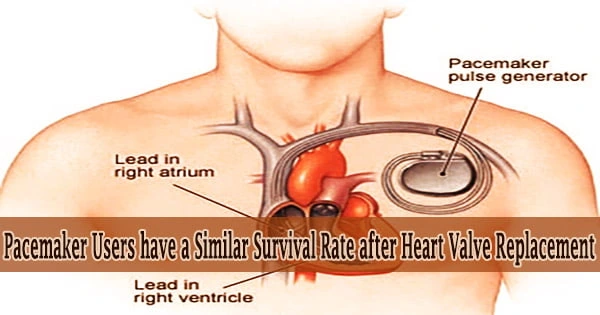Long-term outcomes in patients who got pacemaker implantations after transcatheter aortic valve replacement through the groin were studied by researchers at Sweden’s Karolinska Institutet.
A pacemaker is a tiny device that is implanted in the chest to assist in the control of the heartbeat. It’s used to keep the heart from becoming overly sluggish. A pacemaker must be implanted in the chest through surgery.
There was no significant difference in mortality between those who had pacemakers and those who didn’t. The research was published in the JACC: Cardiovascular Interventions journal.
Almost all current pacemakers operate on the basis of demand. This means they can be set up to vary the discharge rate based on your body’s needs. A unique sensor in most pacemakers detects body movement or your breathing rate.
Transcatheter aortic valve replacement is becoming more popular as a therapeutic option for significant constriction of the aortic valve, the heart’s major valve for controlling blood flow to the body’s main artery.
Doctors put a catheter from the groin into the major artery leading to the heart and replace the defective aortic valve with an artificial one to restore blood flow. The procedure is a less invasive alternative to open-chest surgery.
Aortic valve replacement is the removal of a malfunctioning or damaged valve and the replacement of a new valve composed of synthetic materials or animal tissue. It’s a big procedure that isn’t appropriate for everyone and can be difficult to recover from.
The requirement for a permanent pacemaker to stabilize the cardiac rhythm is a potential consequence after aortic valve replacement. This complication has been associated to higher mortality in earlier research and has been found to be more common following transcatheter surgeries than after open-chest surgery.
Despite this, bigger investigations on the impact of pacemaker insertion after transcatheter aortic valve replacement have been lacking.
The researchers evaluated the survival rates of all patients who had groin leg incisions for transcatheter aortic valve replacement in Swedish hospitals between 2008 and 2018.
There were 3,420 patients in all, with 481 (14%) receiving a permanent pacemaker within 30 days of surgery. Patients averaged 81 years old and were followed for up to 11.8 years (2.7 years on average).
Our study contributes to understanding the impact of pacemaker implantation after transcatheter aortic valve replacement, which is becoming increasingly important as the use of this method expands to include younger and low-risk patients with a long life expectancy.
Natalie Glaser
The study found that individuals who had a pacemaker had no increased risk of mortality, heart failure, or endocarditis (a serious heart infection) than those who did not.
“Our study contributes to understanding the impact of pacemaker implantation after transcatheter aortic valve replacement, which is becoming increasingly important as the use of this method expands to include younger and low-risk patients with a long life expectancy,” says Natalie Glaser, a researcher at the Department of Molecular Medicine and Surgery at Karolinska Institutet and the study’s corresponding author.
A pacemaker can help with symptoms like weariness, lightheadedness, and fainting that are caused by a sluggish heartbeat. Because most modern pacemakers change the heart rate automatically to match the level of physical activity, patients may be able to resume a more active lifestyle.
More research is needed to see if the findings can be replicated in a larger patient population, including patients who are younger and at lower risk.
The Swedish Heart-Lung Foundation, the Swedish Society of Medicine, Region Stockholm, the Capio Research Foundation, the Eva and Oscar Ahrén Research Foundation, and the Seraphim Hospital Foundation all contributed to the study’s funding.
















